There’s a battle going on in the arena of software development, PHP vs Python. And it never seems to end.
Developing a successful website or application starts with choosing a reliable programming language.
With stiff competition to produce high-performing, scalable, reliable, secure, and flexible web products, it has become necessary to choose a wise technology base, including the programing language.
While experienced programmers have their personal preferences, logical opinions, and favorite tools for software development, beginners and project managers face trouble while choosing a programming language to get started.
There are so many programming languages out there like Java, Python, JavaScript, PHP, Ruby, etc., each with its strong and weak points. You also need to narrow down your choice of programming languages based on your unique project requirements, timeline, the end goal, budget, amongst other factors.
And if you already have joined this battle of PHP vs Python and are confused on which side you must continue your fight, this article can help you.
Let’s find out what wins in our comparison criterion and what is suitable for your project requirements.
PHP vs Python: What Are They?
Before we start comparing the two programming languages, it’s important that we first understand what they are.
Here you go!
What Is PHP?
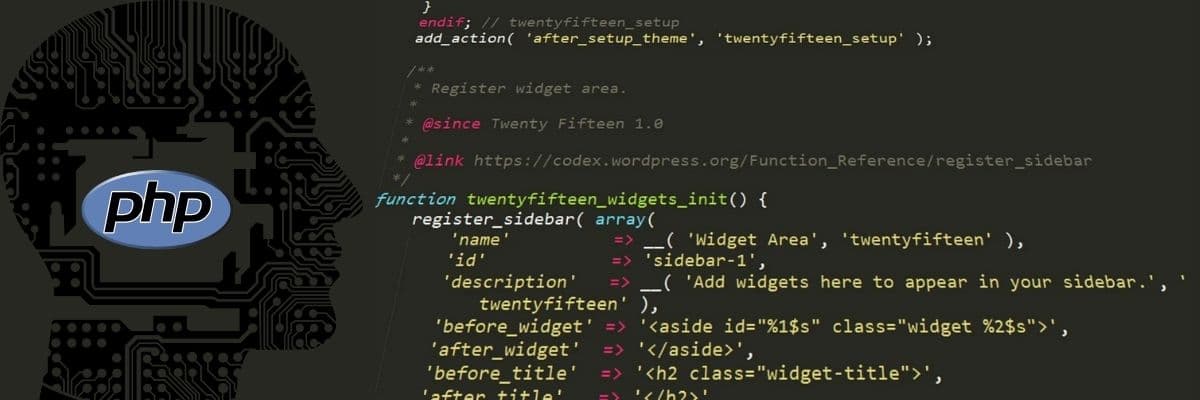
Hypertext Preprocessor (PHP) is an open source scripting language used extensively for server-side web development.
Created in 1994 by Rasmus Lerdorf, a Danish-Canadian programmer, PHP was named Personal Home Page originally. He released the first PHP version (PHP 1.0) in June 1995.
Since then, various developments have been made for the subsequent PHP versions, and we have PHP 8 as the latest PHP version that was released in November 2020.
PHP project’s mascot is a blue “elePHPant” (elephant) with its logo written on its side. Vincent Pontier is the designer credited for creating this mascot.
A PHP code is processed over a web server using a PHP interpreter implemented in a daemon, module, or an executable CGI (Common Gateway Interface).
This interpretation and execution of PHP code can be data of any type, such as binary images.
Features
The features of PHP include:
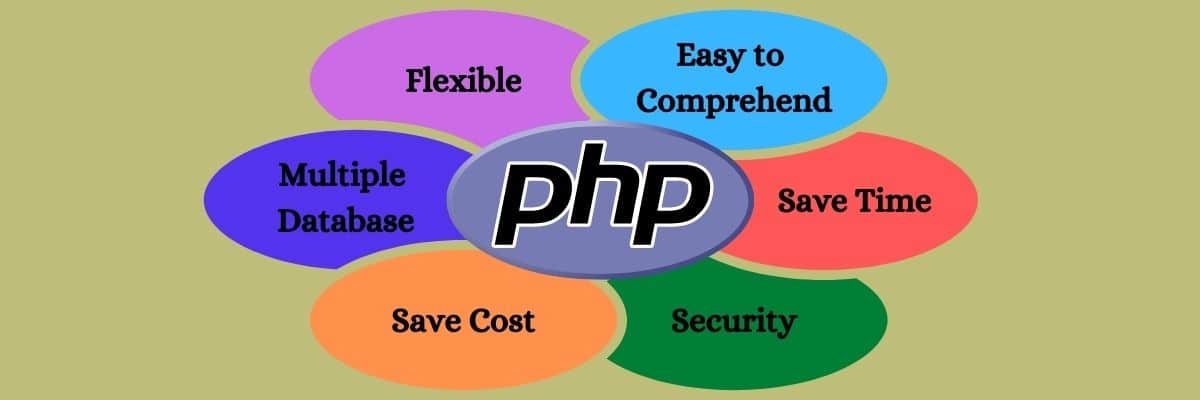
- Open source: As PHP is open source, anyone can download it and use it however they like to accomplish their web development goals. This enables developers worldwide to inspect codes, post errors, and contribute to coding and bug fixing.
- Simple and easy to use: PHP is simple and easy to use, which is one of the top reasons many developers prefer this programming language.
Its syntax is quite similar to that of C language, with a well-organized and logical structure. It’s also easy to learn PHP and dive into coding compared to many scripting languages.
- Multiple database support: PHP supports various databases, including MySQL, Oracle, PostgreSQL, etc., along with database integration.
- Cross-platform compatibility: It can run on almost all operating systems, including Windows, Mac, Linux, and Unix. PHP scripts also run across devices such as computers, laptops, tablets, and mobiles. Besides, PHP is also compatible with various servers such as IIS, Apache, and more.
- Flexible: PHP offers greater flexibility and embedding capabilities. It can easily be integrated with JavaScript, HTML, XML, etc.
- Error reporting and exception handling: PHP supports some predefined error-reporting constants to generate error warnings. Additionally, it facilitates exception handling to display errors and fix them.
- Efficient and fast performance: PHP scripts can show better performance than many scripting languages such as JSP, PERL, ASP.NET, etc. Its data loading and database connectivity are also faster to enable efficient database management, mail functionality, and server administration.
- Real-time monitoring: It provides recent logging details of a user. You can access CPU and memory usage data as well.
- Object-oriented features: The object-oriented features in PHP contributes to its speed and offer additional features such as inheritance, data encapsulation, etc.
- More features: PHP offers magic constants, regular expressions, PDO class, supports cookies, shell command-line execution, and much more.
What Is It Used For?
This server-side scripting language can generate dynamic page content, create files on a server, open, write, read, close, or delete files.
PHP is database friendly, which is why it can effortlessly add, modify, or delete data inside a database.
In addition to these, PHP can also collect data out of your forms, support cookies, perform data encryption, and control user access.
According to a W3Techs report, 79.2% of all sites on the internet use PHP as their server-side programming language as of 19th March 2021.
Some of the popular websites using PHP are WordPress.com, Facebook.com, Wikipedia.org, Zoom.us, Microsoft.com, Canva.com, Salesforce.com, and so many more.
Applications
- Web-based apps and web pages: The modern web pages and apps must provide a greater level of customization, a highly interactive and friendly user interface, support seamless integration, and enable secure online transactions in addition to offering fast performance.
PHP uses a three-tier architecture that works on your server, database system, and browser linearly to meet this demand.
- Graphic design and image processing: PHP is reliable to manage text content and graphic design and image processing. It supports integration with many libraries like ImageMagick, GD library, Imagine, and more PHP-based applications.
It allows users to rotate, resize, crop, add watermarks, create thumbnails, and extract images in various formats like PNG, GIF, JPEG, WBMP, and XPM.
- Web CMS: PHP extends support to various databases and interacts with different services through protocols, including IMAP, POP3, HTTP, COM, SNMP, etc.
Therefore, it’s common to create web content management systems like WordPress, Moodle, Drupal, Joomla, and more.
- GUI-based apps: You can create a graphical user interface (GUI)-based apps using PHP-GTK 2 and ZZEE PHP GUI that allow PHP scripts and compile your code into a .exe file, which can run standalone.
- Data representation: Using tools such as Image_Graph with PHP, you can create different data representations like charts, graphs, and more. It’s useful in ecommerce websites and applications leveraging data representations in various forms.
- To create flash elements: You can create flash elements like gradients, shapes, bitmaps, buttons, texts, morphs, animations, actions, email forms, login forms, etc., using PHP-based open source libraries (e.g. Ming).
- To build ecommerce applications: Building an ecommerce app is easy by using PHP-based frameworks like CodeIgniter. It’s useful for businesses of all scales, from startups to enterprises. Ecommerce platforms created using PHP are Magento, PrestaShop, OpenCart, and more.
That was all about PHP.
Now let’s take a look at Python and set the grounds for our head-to-head competition between the two languages.
What Is Python?

Python is an object-oriented, interpreted, high-level programming language.
It was developed by Guido van Rossum and released in 1991. With the development in various versions and subversions, we now have Python 2 and Python 3, with the latest one being Python 3.9.2, released recently on February 19, 2021.
The design philosophy of Python focuses on code readability and uses significant indentation and dynamic semantics. It is dynamically typed and supports garbage collection and various programming paradigms, such as structured (mainly procedural), functional, and object-oriented programming.
As a result, it helps programmers code clearly with logic and is useful for large-scale and small-scale projects. Due to its extensive list of standard libraries, Python is also known as a “Batteries Included” programming language.
Features
The main features of Python are:
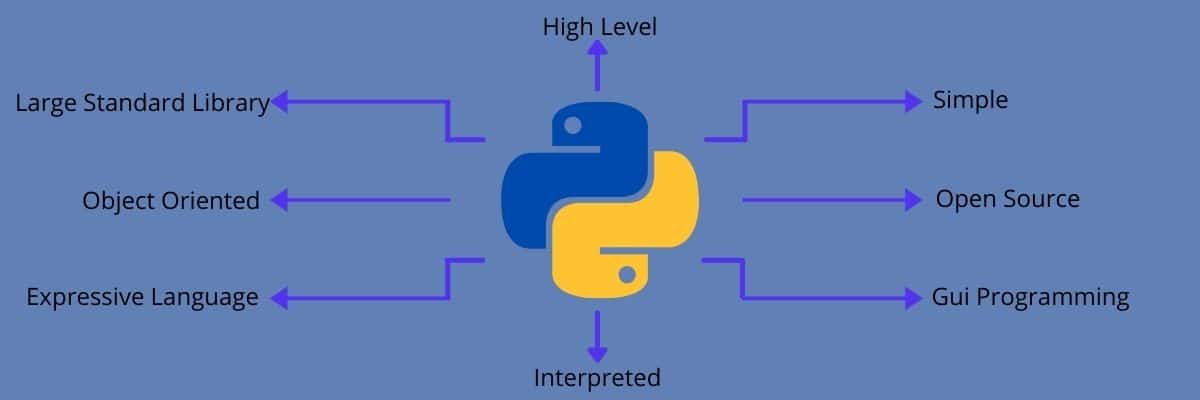
- Free and open source: Python is available on its official website to download for FREE and use it. You can also use its publicly available source code and modify it based on your needs.
- Easy to learn and code: This high-level language is easier to learn than other languages, including Java, JavaScript, C++, C, etc. Writing programs in it don’t require you to manage the memory or remember the entire system architecture.
It’s also developer-friendly and uses simpler, less complex syntax with plain English and mathematics. Hence, coding becomes effortless with Python, which is why many developers love it.
- Object-oriented: This is one of the main features of Python, which enables concepts like object encapsulation, classes, construct and destruct, and more.
- Extensible: Instead of building the entire functionality in its core, this language was designed to be extensible with various modules. Due to the compact modularity, developers find it easy to add programmable interfaces into existing apps. You can also write a Python code in C/C++ and compile it.
- Interpreted language: Python codes are executed line-by-line, one at a time similar to Java, C++, and C. Therefore, code compilation is unnecessary, making debugging easier and saves time.
- Portable: Python codes are portable. In case you have Python codes for Windows OS, and you want to run it on other operating systems like Mac, Linux, or Unix, it’s possible without changing the codes.
- Dynamically-typed: A variable type is decided during run time instead of at the start. Hence, you don’t need to specify the variable type like int, char, long, double, etc. It reduces lines of code and makes the programming even simpler.
For example, in Java, you write int x = 5
But in Python, you’ll write x = 5. That’s it. This “x” can be any type of variable.
- Compressive standard library: Its standard library houses a rich set of functions and modules, so you don’t have to write every code from scratch. You can simply use the available codes for applications like unit-testing, regular expressions, web browsers, CGI, image manipulation, and more.
What Is It Used For?
There are many uses of Python, such as:
- To Create web applications: Python is one of the best programming languages for web development due to the array of options it provides you with. It supports frameworks such as Pyramid and Django, micro-frameworks like Bottle and Flask, and advanced CMS like Django CMS and Plone.
These frameworks are flexible, scalable, secure, and come with various modules and standard libraries useful for simplifying tasks such as database interaction, content management, etc. Its standard library also supports internet protocols like HTML, XML, FTP, IMAP, POP, etc.
Additionally, its Package Index has other useful libraries, including Requests, Feedparser, Beautiful Soup, Paramiko, and Twisted Python.
- Machine learning (ML) and artificial intelligence (AI): AI and ML projects are different from traditional software projects and models. They require different skill sets, technologies, and tools, and a stable and reliable language. Python is equipped with such functionalities and flexibility to handle unique project requirements.
Its simplicity, platform independence, resourceful libraries, consistency, and active development community strengthen people’s use of Python in their AI and ML projects.
Python packages famous for AI and ML include SciPy for sophisticated computing, Seaborn to visualize data, Pandas for data analysis, IPython for parallel computing, and recording work sessions TensorFlow, and Keras for ML, NumPy for high-level scientific computing, and more.
- Desktop GUI creation: As Python has a module architecture and works on multiple Oss, you can create desktop GUIs using an efficient text-processing tool, framework, or a Python module, such as PyQt4, PyQt5, WxPython, PyGtk, PySide, PyGUI, Tkinter, etc.
- Software development and rapid prototyping: Python applications and packages aim at simplifying software development processes. Python can help you develop web and desktop applications, along with complex applications capable of numeric and scientific computing.
Developers use Python extensively, even for build-control, management, and testing. For these individual purposes, you can use SCons, Trac or Roundup, and Apache Gump or Buildbot, respectively.
- Other uses: Python is used for game development using libraries such as PySoy, which is a Python-based 3D game engine. This is why video game developers used Python in games such as Battlefield 2, Civilization-IV, and more.
Python is also used to build enterprise-level or business applications, requiring more scalability, extensibility, and readability. For this, Python-supporting tools are available like Odoo and Tryton.
It is used in language development for Boo, Cobra, Swift, CoffeeScript, etc. Python is the language behind Oss like Linux distributions” Ubiquity Installer. You can also control big data, connect to databases, perform web scraping, leverage graphic design and image processing, etc., using Python.
Check out our comprehensive list of Python tutorials to find out about the best way to learn Python!
PHP vs Python: In-depth Comparison
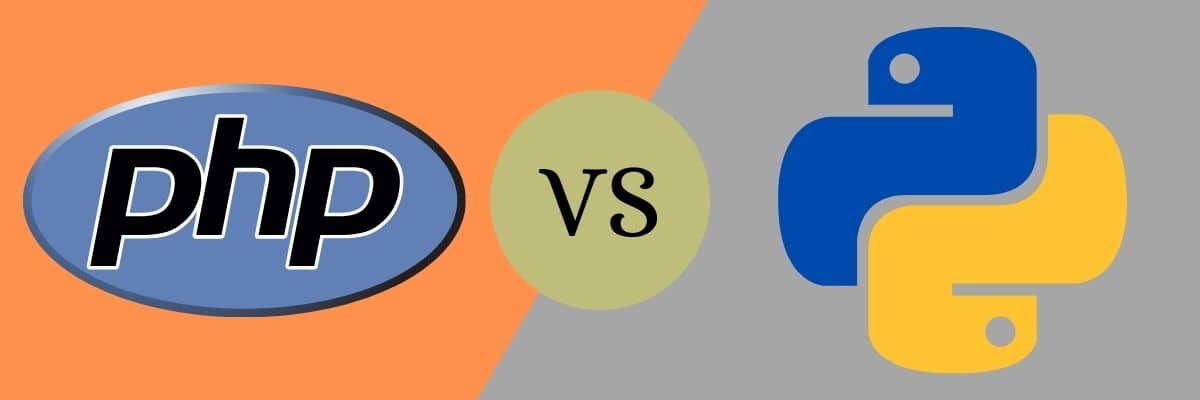
Now that we have discussed both languages, PHP and Python, and their features and applications, it’s time to compare them against various parameters explained below.
It will help you understand which language is more suitable for which use, how efficient and easy they are to work with, and which can give the better result for your development efforts and time.
Let’s begin the tug of war – PHP vs Python.
Which Is Easier to Learn?
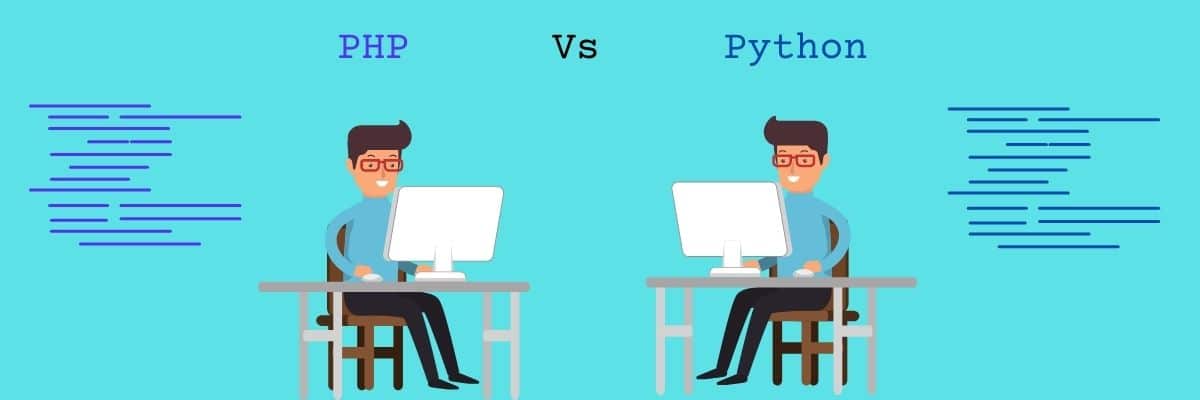
PHP, although a general-purpose language, is great for developing more sophisticated web applications. Its syntax is a bit similar to Java, C, C++, and Perl. The function returns, if conditions, while and for loops are also similar.
In PHP, variable names are case-sensitive. It terminates statements by a semicolon and treats whitespaces and newlines like a free-form language. It requires you to prefix variables with $, uses curly braces and the - > operator for indicating a method.
Overall, it takes quite a long time to learn PHP and code in it, especially for beginners. But their developer community is working on making it easier.
For example, PHP 4 involves improved object-oriented programming with better abstraction to enable tasks easier.
On the other hand, Python is easier to learn, even for beginners. This scripting language was designed to be easily readable with uncluttered formatting, simpler syntax, and plain English words instead of punctuations.
Python does not employ curly braces for delimiting blocks. Instead, it uses whitespace indentation. This gives an accurate visual structure to its semantics. Python also includes rare use of semicolons and has fewer special cases and syntactic exceptions.
These attributes make Python coding easy to learn and write, shorter in length, and simpler to debug. In addition to this, it leaves room for error because the main codes don’t break in cases of small mistakes. This is why various programming courses use Python to teach programming fundamentals to beginners.
Conclusion: Python is a clear winner.
Ease of Installation
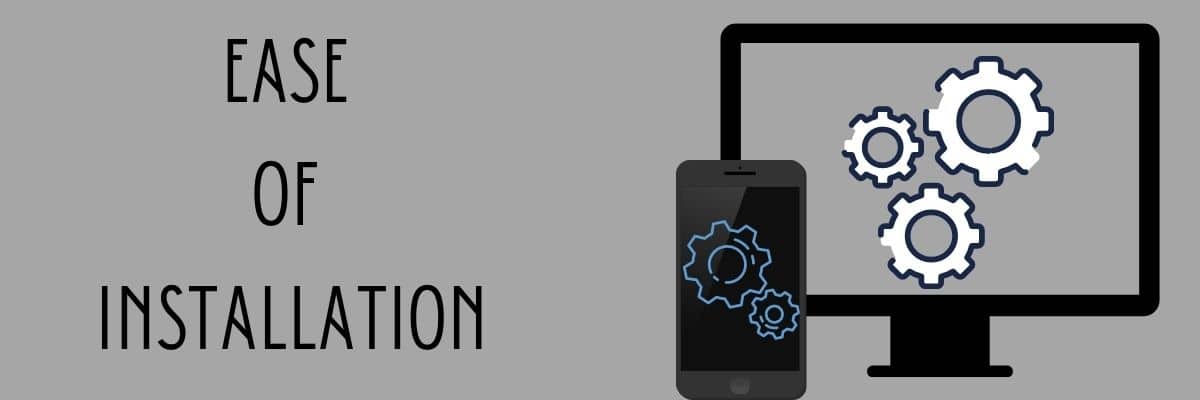
PHP installation is comparatively easy. It installs and runs nicely on Windows, Linux, and macOS X. You can also find it on many shared hosting websites for lower fees worldwide.
If you want to build a small app, PHP would be a great help.
In contrast, Python can be challenging to install. It can also become more difficult on macOS X with another Python version already installed on your system.
Another disadvantage is that this already existing Python version would be outdated, hence, not suitable to develop an app. And even if you try installing new Python packages, you will need a new Python version installation.
We know this can get frustrating.
Apart from this, installing Python can get a bit tricky on Windows. To reduce the risk of running into issues, use a package manager such as Chocolatey.
But if you’re a Linux user, you won’t find any trouble installing Python on your computer system.
Verdict: PHP wins in terms of installation.
Performance and Speed
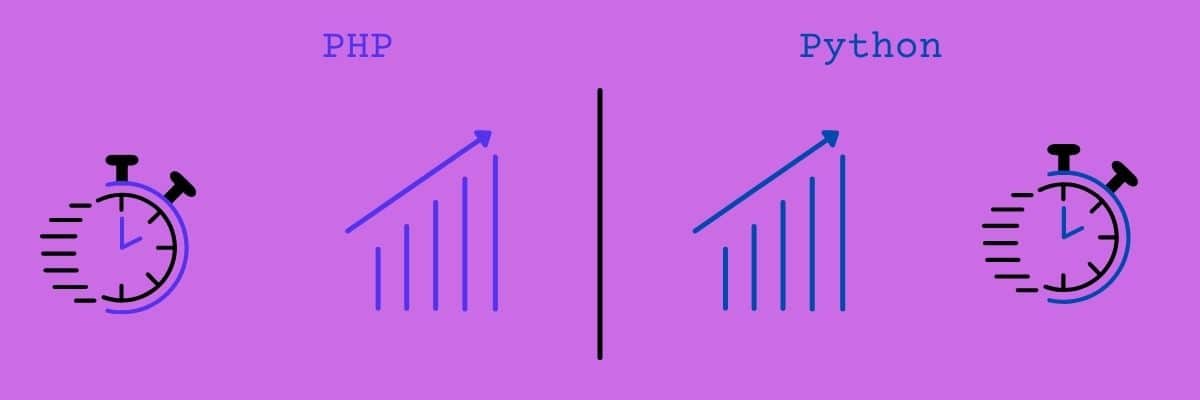
According to an Unbounce report published in December 2018, 79% of online shoppers facing trouble with site speed and overall performance say they won’t visit or patronize the website again.
It shows that all the apps and sites you develop must be responsive and load faster—within 2-3 seconds at most.
Although speed and performance can vary due to various elements like hardware resources, memory, storage space, code logic, hard disk access time, data path width, and more, what programming language you use is also a factor to consider.
Hence, comparing the speed and performance of Python and PHP is crucial.
The early versions of PHP were slow, including PHP 5.x that took a great deal of time to execute codes. It seems like their developer community has worked significantly on improving the programming language’s performance and speed with PHP 7.x.
It’s exceptionally faster than many programming languages, including Python. Zend Engine 3.0 was also released with PHP 7, making the programming language 2x faster than its previous version.
Comparatively, Python’s code compilation process is designed to be quicker, even without installing caching systems. When a file is created and/or modified, it converts this code into bytecode. It was way faster than what PHP used to be before PHP 7.x was introduced.
For example, if you’re developing a banking system, which can receive a huge amount of traffic daily, it needs to be exceptionally fast. Shorter delays can impact system performance greatly. In this case, using PHP 7 would be recommended over Python.
However, if you want to build a simple application where speed and time lag don’t have much impact, you can use both Python and PHP.
Conclusion: PHP wins in terms of speed and performance.
Library Support
Developers can integrate libraries with web frameworks to facilitate quick development. They can reuse these libraries whenever they want with some tweaks based on their development requirements.
This way, your projects complete in less time, testing becomes less risky, and the cost is also minimized. Hence, library management is an essential factor to consider.
PHP’s library support is not that strong. However, PHP 7 introduced a powerful tool, Composer, which is its dependency manager. You can pair it with Packagist (package repository for PHP) and manage your libraries more efficiently.
But Composer is still young and may not be completely reliable at the moment.
Python, on the other hand, offers excellent and mature support for libraries. Python utilizes “Pip Installs Python” (Pip) for package control. Pip is fast and makes it simpler to manage libraries for a Python application, plus you can parse your project requirements way easier.
AI and ML-backed web applications are in demand these days. And if you also want to develop such an app, Python has some exceptional ML libraries such as TensorFlow, Scikit Learn, Keras, Theano, and many more matured libraries.
All these libraries integrate seamlessly with web frameworks and are also pretty fast, easy to use, and install. Hence, Python helps to make web development simpler.
Conclusion: Python is the winner.
Web Framework Options
Both Python and PHP offer a wide range of options for web frameworks.
The most commonly used PHP-based frameworks are Zend (which is incredibly efficient), Symfony, CodeIgniter, Laravel, Yii, Phalcon, and more.
Many modern PHP apps utilize Laravel, Symfony, and CodeIgnitor these days due to their minimal configuration requirements, higher scalability, and faster performance.
Examples of famous sites using these frameworks: Vogue, Sony VAIO UK, Barracuda, Casio, etc.
Python also offers many web frameworks to support your development with a high level of customization, support functionalities like interpreting requests, producing responses, storing data, and more.
Famous Python web frameworks are Django, Flask, TurboGears, Pylons, CubicWeb, Bottle, Pyramid, and more.
Django is witnessing high usage these days and is perfect for perfectionist developers. It is a high-level framework that encourages clean design and rapid development. It emphasizes automation, and you can build apps faster with fewer codes.
Other Python-supported frameworks are also resourceful in terms of security, performance, fewer dependencies, and ease of customization.
Conclusion: PHP vs Python tug of war is a tie when it comes to supported web frameworks.
Environment Management
Taking account of environment management is necessary to talk about in PHP vs Python, especially if you don’t want to rely on software containers while building apps.
And using no containers means you need to take care of segregating the installed language of your app along with library versions. This is not that simple as it sounds and requires a great deal of patience, time, and effort.
So, when it comes to environment management, PHP has virtPHP as its environment manager. However, it is not actively maintained and has been archived for a long time. This is why even PHP developers suggest not using virtPHP, but a container.
A container is a better option for operational development, and developers can use it to run a software process, small microservice, or even a large application.
It enables less overhead, consistent operation, more portability, and greater efficiency for app development. This is why containers like Kubernetes and Docker are in high demand these days.
In fact, if you use a container, you don’t even have to think about environment management.
If you don’t, let’s see how good Python is based on environment management.
Python has Virtualenv, which is one of the best applications useful for managing the environment. It can install multiple Python versions side-by-side, manage them, and switch versions quickly.
Virtualenv is among the original environment management applications that are celebrated among the developer community. They have been managing this excellent application for 10+ years.
Conclusion: Python is clearly better than PHP in the context of environment management.
Flexibility, Scalability, and Versatility

As a business grows, its user base also grows with it. Therefore, the application they use must be scalable to meet the demands of their customers.
A scalable app also gives more flexibility to businesses based on market demands and withstand high traffic during peak seasons. It must also give you the option to scale up and down based on your business needs.
Both Python and PHP are suitable for web development with wide-ranging frameworks and libraries.
PHP supports powerful frameworks like Symfony, Laravel, etc., as discussed above, so that you won’t face trouble during development, testing, and management.
However, when we talk about scalability, Python has the edge over PHP with its artificial intelligence and machine learning capabilities that adapt to new trends and scale as per demands.
By contrast, PHP is less flexible in response to new trends and growing demands, even after some great recent improvements to the language.
Python also offers lots of web frameworks, and you already know Python is better in library support. You have frameworks like Django and Flask that are highly scalable, secure, and fast.
Whether you want to deploy ML models or use independent and decoupled components to build apps, Django is there to help. You can replace or unplug these components based on your changing business needs.
Due to its versatility and simplicity, Instagram uses the Django framework, choosing Python in the PHP-vs-Python race. It helps this social media site cater to its millions of users every single day without hassles.
Conclusion: Python, again.
Security
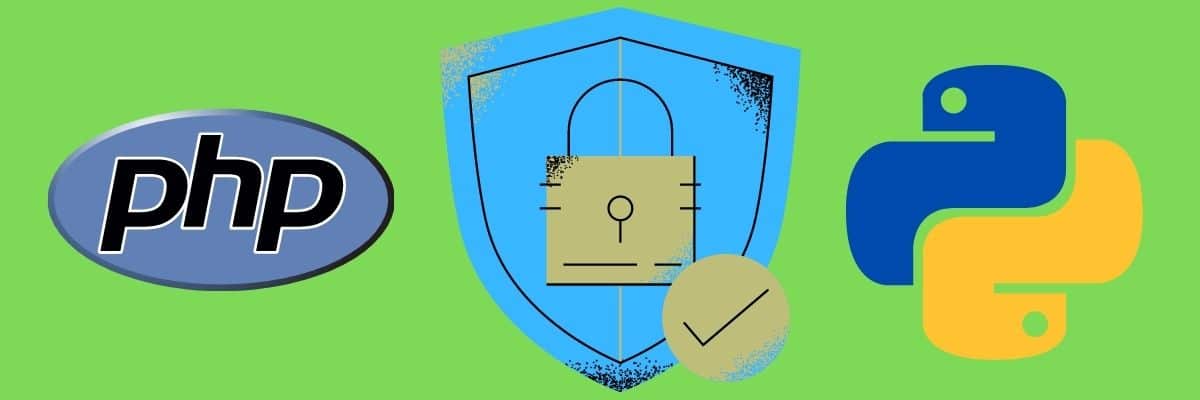
Cybersecurity is probably one of the biggest concerns of the internet world.
Cyberattacks are also evolving with the advancements of technology, such as cross-site scripting (XSS), malware injection, phishing scams, DDoS attacks, and more.
Ultimately, businesses and individuals are suffering hugely in terms of money and reputation.
As per a Varonis report published in March 2021, 88% of global organizations faced spearfishing attacks in 2019, while 95% of all cybersecurity breaches occurred due to human error.
This is why developers and designers need to take security seriously for web development. Choosing a programming language that can provide better security is what they should aim for.
Another study published in December 2015 shows that around 86% of apps written in PHP involve one XSS vulnerability at least. Many security issues in PHP have been resolved due to its huge community, but you need to choose the most secure alternative.
Python is more secure than PHP. It has many security features that you can leverage to build complex applications with high-end functionality and clear goals. In fact, this March 2019 report shows that Python is one of the most secure programming languages.
For example, Python supports Django, which comes with security features to protect the apps from threats. This is why many government organizations and banking institutions leverage Python to build their robust applications with top-notch security.
Conclusion: Python wins without a second thought.
Debugging

The next comparison in our PHP vs Python is how efficient both languages are for debugging.
As a developer, you need to be prepared for both cases, when things work and when they don’t.
And when your application has bugs in it, it won’t perform the way it’s expected and might incur security risks as well.
In this case, an efficient debugger helps to find out what went wrong with your codes and fix it.
Debugging PHP can be a bit tricky. It may need you to do some extra work sometimes to complete the debugging process. However, using a PHP debugger like XDebug is not tough, so you can get started with the debugging process sooner and complete it.
Like PHP, Python also has brilliant debuggers such as Python Debugger (PDB) that is effortless to use even if you’re a beginner. So, just press that “debug” button and start getting rid of bugs to achieve a better performing and secure app.
Besides, some of the debuggers of both PHP and Python can be integrated with IDE, such as PyCharm or Visual Studio Code.
Conclusion: It’s a tie.
Documentation
If you’re a beginner or an experienced developer who will start a new project, one of the foremost things you need is good documentation. It’s essential for the programming language you have chosen or the tools you’re going to use.
It will provide complete information and help you stay updated with the latest developments introduced along with the challenges you would have to tackle.
This is why we need to see how good documentation is for each programming language in this PHP vs Python comparison.
Both PHP and Python have comprehensive documentation available in abundance. You can refer to countless forums, websites, discussion boards, tutorials, and courses available for both.
PHP has a documentation website consisting of information in 10 languages. It deeply covers the features of PHP in simple language. Developers are allowed to comment on each page that can help clarify complex concepts with effective examples.
But these comments, once contributed, remain forever on the page so that every visitor can view them. As a result, even the older comments show up on top related to previous PHP versions.
This means they’re either resolved or obsolete. But when people see them at first, it creates lots of confusion, as they don’t immediately understand what issues have been addressed and what they are still working on. This is a drawback to the native PHP documentation.
With Python, you don’t encounter situations like this. It also has in-depth documentation for each version with a table of contents, new improvements introduced, installing Python modules, complete tutorial, usage, library reference, extensions, FAQ section, and more.
In addition to this, the documentation doesn’t show comments, so there’s no confusion there. However, the given explanations can be difficult to understand by some.
Comparing each advantage and disadvantage, Python still scores higher due to the obsolete comments, creating confusion in PHP.
Conclusion: Python.
How They Work With WordPress
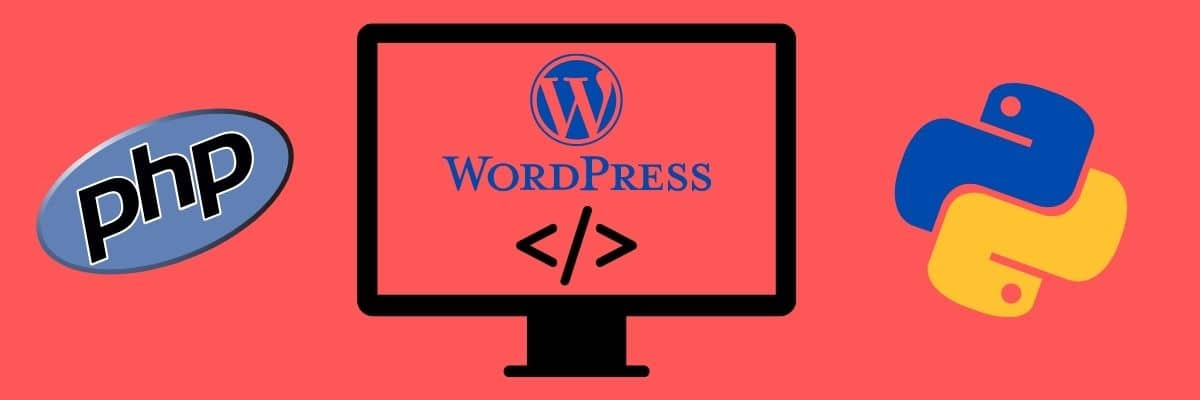
WordPress uses PHP as its core programming language. Therefore, it already has importance among the WordPress Community.
If you want to understand how PHP works with WordPress, just download WordPress from their official website and open the downloaded ZIP file. It will have most instructions detailed for PHP.
In addition to this, if you install a WordPress theme or plugin, you’ll find PHP files in the majority of them.
So, when visitors browse your site, PHP modules on the server process the PHP codes, generate output in HTML, and display it on the visitor’s screen.
WordPress needs PHP to process a URL’s request, fetch data from a database, load files, fetch post metadata, validate user permissions, call plugins and themes, upload a document or image, and more in addition to building a web page and interface.
Now comes the best thing: you don’t necessarily need to learn PHP to use and manage a WordPress website.
But if you want to modify default WordPress attributes, make complex customizations, or develop new WordPress plugins and themes, learning PHP is a must, along with CSS and HTML basics.
WordPress and its plugins and themes are written in PHP, Python, and WordPress seem like an odd pair.
That’s why if you just need a CMS or planning to start a blog, use WordPress, but choose Python to develop a high-end app for fin-tech, web scraping, or data analytics.
Nevertheless, if you still want to use Python in WordPress, you need to find a common link—MySQL.
Both WordPress and Python support MySQL. You will need a plugin that can initiate MySQL queries to your database, then display the output on your front-end.
However, many wouldn’t want to go with these hassles.
Hence, PHP, beyond a doubt, works great with WordPress and beats Python by a significant margin here.
Conclusion: PHP wins.
How They Work With MySQL
MySQL was launched in 1995, the same year as PHP. It became a leader in the database world quickly. It is open source and comes with many benefits such as high-speed, fewer digital footprints, scalable, easy to install, reliable security, and more.
Hence, if you want to use MySQL in your app, you need to make sure which programming works better. So, we are going to compare MySQL usability in this PHP vs Python battle.
The combination of MySQL and PHP provides unlimited options to build almost any type of website, from a large business portal to a small-scale contact form. PHP works with all databases virtually, such as Oracle, MySQL, and more.
And MySQL is used most commonly in PHP-based web products because it’s open source, freely available, highly versatile, easy-to-use, fast, reliable, and utilizes standard SQL.
People widely use PHP and MySQL to develop cross-platform applications that can run on different Oss such as Windows, Unix, Linux, Mac, etc.
PHP is designed to connect effortlessly to MySQL as soon as you complete running the php command. But with other programming languages, you may have to install extra codes or some plugins to connect to MySQL.
Coming to Python, it needs a special driver to talk to a MySQL database. These drivers are available from 3rd-party vendors. Before you use any one of them, it’s recommended you read the Python documentation and check which all drivers comply with their standard interface.
MySQL documentation uses the word “connector,” replacing “driver” to clarify that it connects as well as interacts with the database.
The different programming languages have different drivers or connectors, and Python uses MySQL Connector.
To establish the connection, you can use PIP to install MySQL Connector. Next, you need to test the database connection using Python and then create a database. Now, you can execute SQL queries, fetch results, notify the database of any changes, and close the connection.
All these processes can be tricky for many. Hence, comparing what works better with MySQL among PHP and Python, it’s definitely PHP.
Conclusion: PHP is the winner.
For Web and Application Development
Next, understanding what would work better for your web and application development is the key. The language you choose must be a good fit for your unique requirements.
Both PHP and Python are suitable for web and app development. So, it all boils down to what exactly you’re planning to develop, how complex it is, and the scale.
PHP was designed for web development at its core. PHP could be suitable if you want to develop a less-complex, small-scale, or medium-scale app with limited features.
Also, PHP helps expedite or simplify the development process with its feature-rich ready-made tools. It can also be a wise choice for developing CMS and ecommerce websites. PHP enables you to integrate with third-party applications flawlessly.
On the other hand, Python comes with powerful functionalities that are hugely suitable for building apps based on AI, ML, data science, Big Data, etc. You have various options available for libraries like TensorFlow, Theano, Pandas, and more (we’ve already seen some of this in the previous section).
So, you can see that both Python and PHP are good in their own ways. Which one you choose greatly depends on your project requirements. It would be best if you also acquired a thorough understanding of both these languages and their usability to choose either of them.
Conclusion: No clear winner.
Developer Community and Support
Having a developer community that is active and supportive is desirable. It helps new developers and curious professionals clear their doubts.
PHP and Python have been released in the market decades ago and have an excellent developer community to support professionals.
You can search for them on dedicated websites and forums and ask questions to understand your programming and web development skills better.
Since its introduction in 1995, PHP has been continuously improved with new feature releases and issue resolutions. As a result, we have PHP 7 now, which is known for its incredible speed and performance.
There’s a vast community of developers available for PHP to extend help. Due to the language’s strong features, Facebook uses PHP as its main backend programming language.
Speaking of Python, it was released in 1991 and boasts a large developer community who further works on evolving the programming language and making it even more robust. Hence, its community is also strong like those of PHP.
Python became more famous when Google used it to develop YouTube and other products. Besides, other notable companies using Python are Pinterest, Reddit, and even Instagram.
Hence, the competition’s neck-and-neck for PHP vs Python in terms of developer community and support.
Conclusion: Both are winners.
Similarities
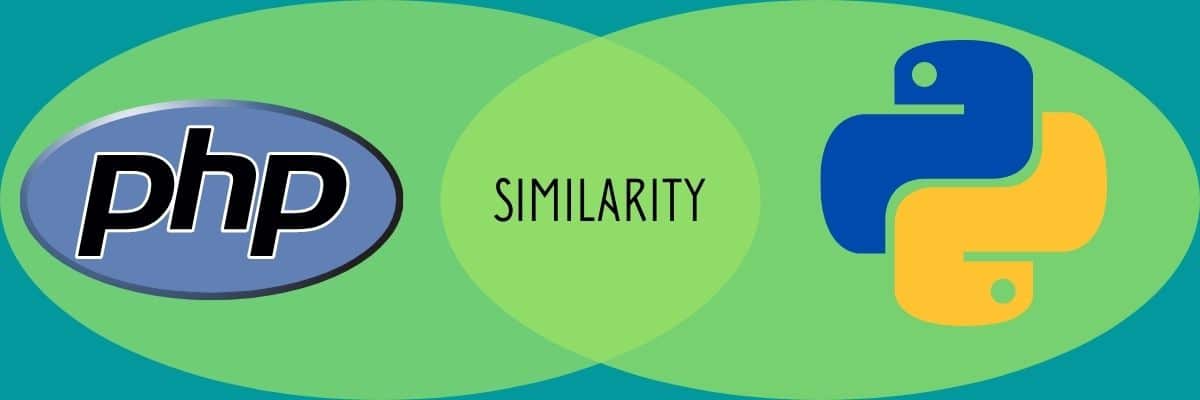
Now, let’s find out some similarities between PHP and Python:
- Both languages are open source and free to use.
- The debugging process for both is good.
- They both have custom-made IDEs that work well with all major operating systems.
- Both have a great developer community who can help you in case of doubts and expand your skills.
- Both support dynamic typing and method chaining.
Differences
The key differences between PHP and Python are summarized as follows:
| Parameter | PHP | Python |
| Language type | Scripting language for web development | General-purpose programming language |
| Learning curve | Tougher to learn than Python | Easier to learn, even for beginners |
| Frameworks with examples | A higher number of frameworks supported (examples: CodeIgniter, Laravel, Symfony, Yii, CakePHP) | Fewer frameworks compared to PHP, but what’s available is effective (examples: Django, TurboGears, Bottle, Flask, Web2Py, Tornado, Pyramid) |
| Speed | Earlier versions were slower, but PHP 7 is exceptionally fast—even faster than Python. | Designed to be fast from the beginning |
| Database connectivity | It’s database-friendly, capable of connecting with 25+ databases seamlessly. | Database connectivity is possible, but not for all. Plus, it needs drivers. |
| Syntax | Its syntax can be a bit complex, uses curly braces, naming rules, $ symbol before variables, and so on. | Its syntax is crisp and clear. No usage of curly braces and no need to define variables. |
| Library support | Offers Packagist, which is robust, but still PHP lags in providing wider library support | Vast library support for almost all kinds of applications |
| Key identifiers | Free and open source, frequent enhancements, laidback deployment | Dynamic typing, simple codes, and rapid development |
| Popularity | More popular (about 79% of websites use PHP) | Less popular than PHP (about 1.1% of all sites on the internet use Python) |
| Readability | Less readable and maintainable | It’s designed to reduce complexities and be highly readable with simple English. |
| Functional programming | No functional paradigms | Functional programming methods are supported. |
| Security | Many security attacks have been witnessed | More secure with built-in cybersecurity features |
| Documentation | Well documented and available, but old comments keep on showing up to foster confusion. | Well documented without confusions |
| Usage | Mostly for web development | Broader usage, including web and app development along with AI, ML, data science, Big data, etc. emerging technologies |
| Notable users | Facebook, WordPress, Wikipedia, Yahoo | YouTube, Pinterest, Instagram, Quora, Uber, Spotify, Dropbox |
| GitHub stars | 30K | 30.4K |
| Forks | 8.04K | 8.23K |
Summary
In this PHP vs Python comparison, Python wins by 2 points. But this doesn’t mean you have to choose Python and neglect PHP. Both PHP and Python are excellent programming languages suitable for web and app development.
PHP has been the go-to choice for a majority of web development projects for quite a long time. But now, Python is slowly making its way with its exceptional features and functionalities for high-end science-based applications and cater to this modern, tech-savvy world.
In the end, it largely depends upon your project requirements along with your skills, knowledge, and expertise in PHP or Python. You can go with either of them if you’re an experienced programmer and you need to design a basic website with less complexity.
But if you’re a beginner, try learning Python first, and then you can shift gradually to PHP or other languages.
Again, if you need to develop science-based applications and sites like AI, ML, Big Data, etc., Python is better.

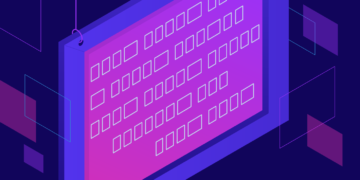

Men, I love python! Both languages are super exciting buh I still stick with python 🤩
I want to point out that the OOP approach is much cleaner and better in PHP than in Python.
Block indention in Python is a matter of taste, but there is a very weakly implemented OOP in Python lacking a lot of OOP features you will miss as your project grows.
Okay I’m determined to create a WordPress clone on Python or Golang or Rust.
Need some ideas from experts.